The practice of grinding grains manually using a grain mill is a time-honored tradition that allows you to transform whole grains into fresh, nutrient-rich flour. Whether you’re a home baker, a culinary enthusiast, or someone who enjoys exploring diverse grain varieties, knowing how to use a manual grain mill is a valuable skill. In this guide, we’ll walk you through the step-by-step process of using a manual grain mill to grind your own flour for a wide range of culinary creations.
Step-by-Step Guide to Using a Manual Grain Mill
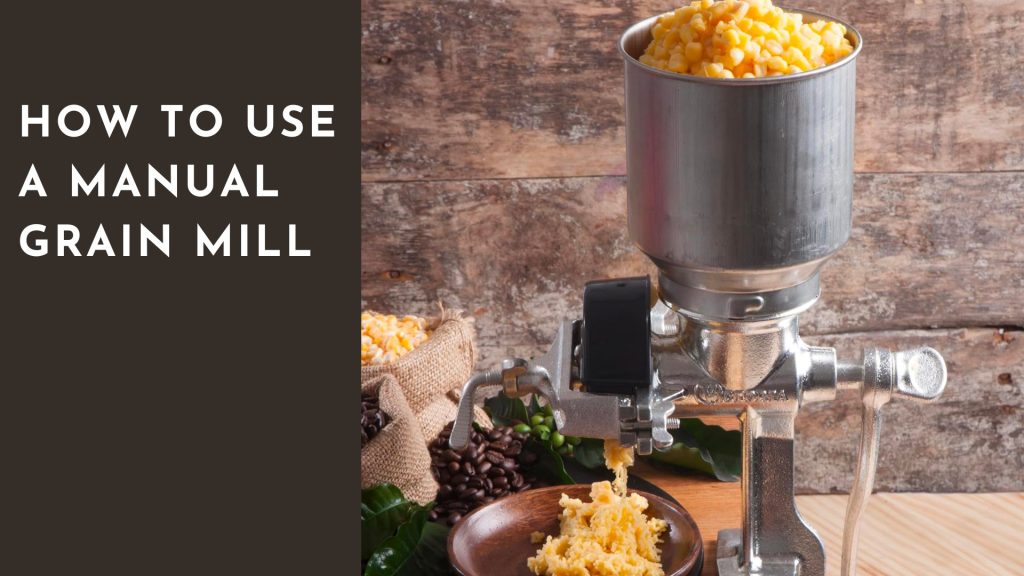
In the world of culinary creations, few things are as satisfying as the ability to craft your own flours. There’s a magical quality to grinding your grains into fresh flour, with its tantalizing aroma and unparalleled flavor. As a chef with years of experience in the kitchen, I’m here to guide you through the art of using a manual grain mill to transform humble grains into something extraordinary. Let’s get start!
Step 1: Choose the Right Grain
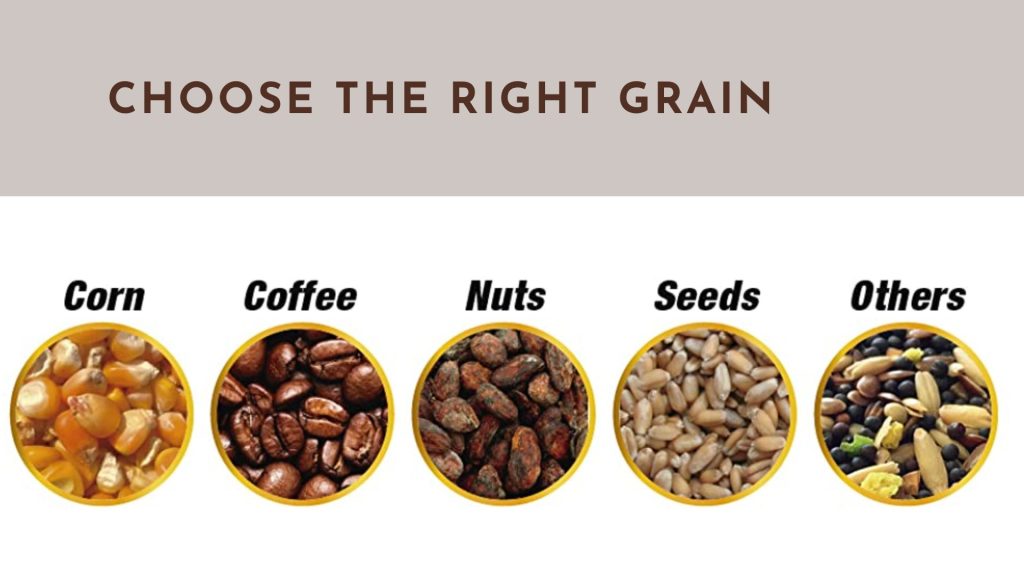
Before embarking on your grain-grinding journey, it’s essential to select the right grains. Whether you’re a fan of hearty whole wheat or prefer the delicacy of rice flour, start with grains that are clean, dry, and free from any unwanted debris. The quality of your grains significantly impacts the quality of the flour you’ll produce. Opt for high-quality, organic grains to ensure the best results.
Step 2: Set Up Your Grain Mill
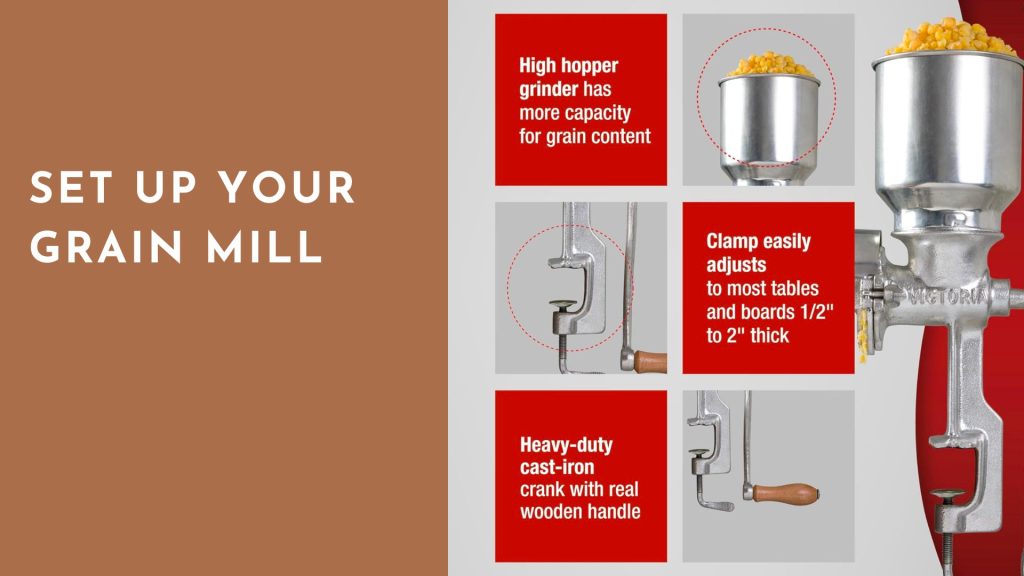
Your journey begins by establishing a sturdy base for your manual grain mill. Place it on a secure surface or countertop, ensuring it’s firmly clamped or affixed if necessary. While some grain mills come with built-in clamps, others may require additional mounting. Stability is key to a smooth grinding process, so make sure your mill is firmly in place before moving forward.
Step 3: Adjust the Coarseness
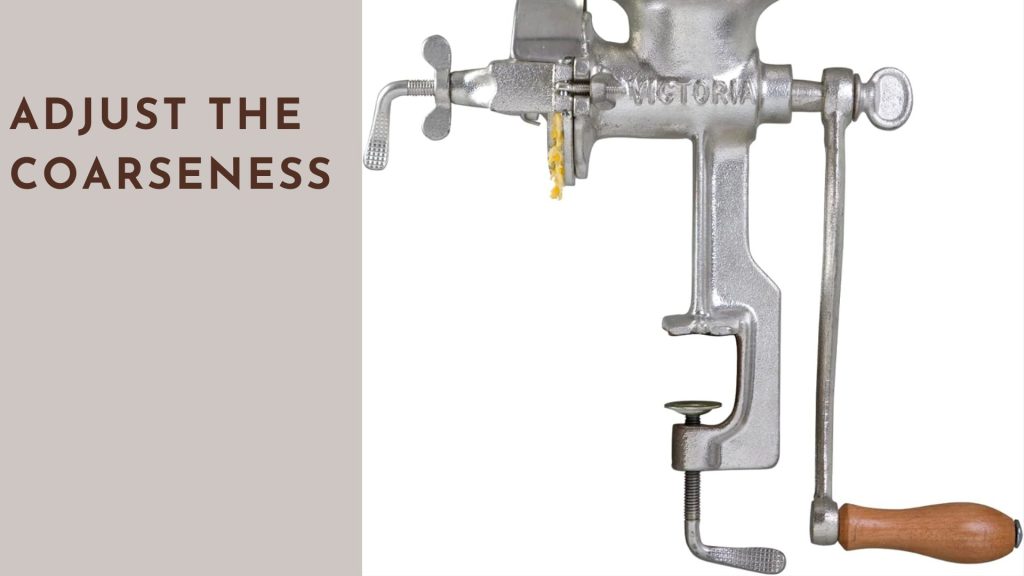
Most manual grain mills offer an adjustable coarseness setting. Depending on your culinary intentions, you may want fine flour for baking or coarser grains for hearty recipes. To achieve your desired texture, refer to your grain mill’s user manual for specific adjustment instructions. The art of grain grinding lies in mastering this step, as it empowers you to create the perfect flour for your creations.
Step 4: Fill the Hopper
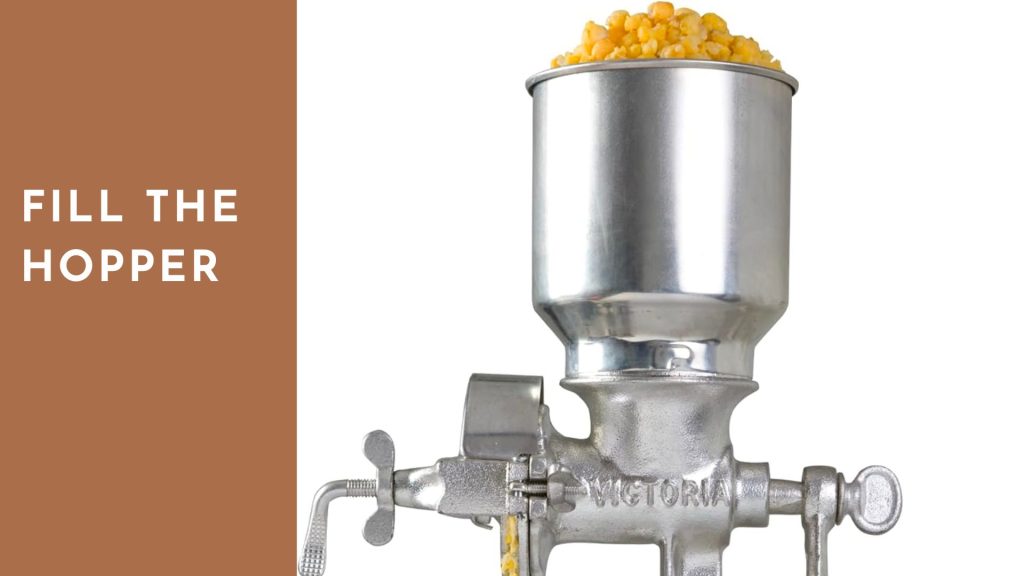
With your grain mill secured and your coarseness setting adjusted, it’s time to fill the hopper with your chosen grains. Take care not to overfill the hopper, as this can obstruct the grinding process and potentially harm the mill. To ensure a consistent flow of grains, gradually introduce them into the hopper, allowing them to find their way to the grinding mechanism.
Step 5: Start Grinding
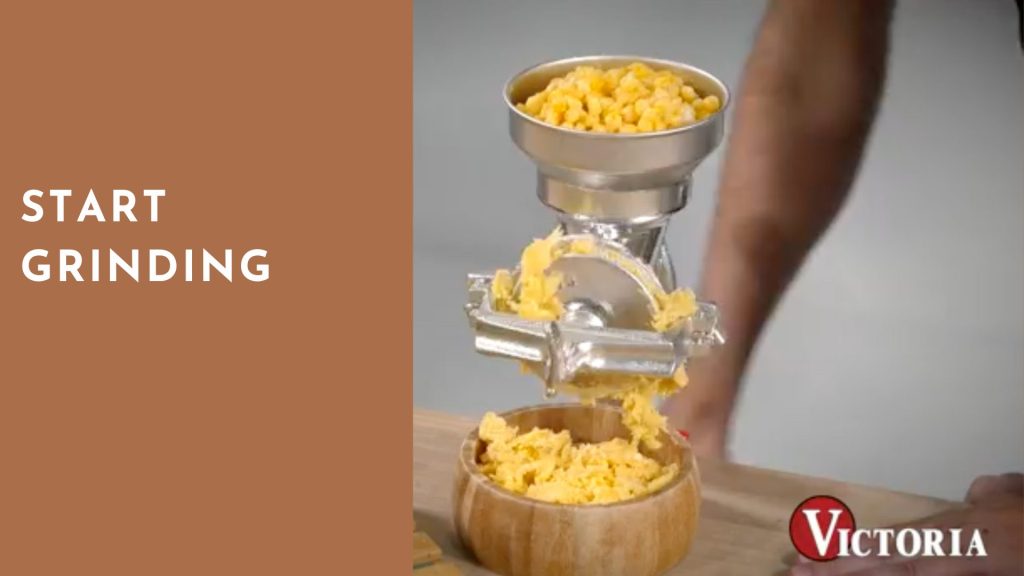
Now, with everything set up and your grains ready, it’s time to begin the transformation. Start turning the handle or crank of your manual grain mill. Consistency is crucial here – maintain steady and even pressure to ensure a consistent flow of grains through the grinding mechanism. As the grains pass through the mill, the process will yield fresh flour on the other side. Grinding can take a few minutes, so be patient and maintain your rhythm.
Step 6: Collect Your Fresh Flour

As you turn the crank, the magic unfolds. Freshly ground flour emerges from the mill. Use a clean container or bowl to collect your precious creation. Give the mill a gentle shake or tap to ensure that every bit of flour is gathered – you don’t want to waste a single morsel of your culinary masterpiece.
Step 7: Store and Use Grain Flour

Your batch of homemade flour is now ready to elevate your recipes. Transfer it into an airtight container to preserve its freshness. From baking bread to crafting pancakes or homemade pasta, your culinary creations are about to reach new heights with the exquisite flavors and aromas of fresh flour.
Step 8: Clean Your Grain Mill
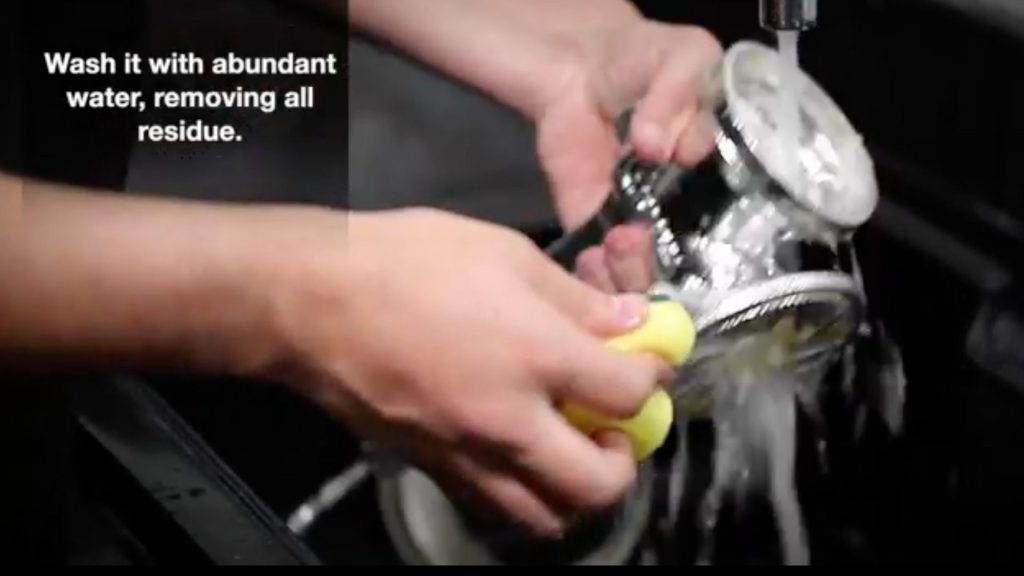
After your culinary adventures, remember to maintain your manual grain mill. Cross-contamination can be a concern, so take a moment to remove any remaining grains. Wipe it down and store it in a dry place, ensuring its longevity and readiness for your next flour-making journey.
Troubleshooting Manual Grain Mills: Navigating Common Challenges
Manual grain mills are remarkable tools for home bakers, culinary enthusiasts, and anyone seeking to connect with the age-old tradition of grinding grains into fresh, flavorful flour. While these mills are relatively simple machines, they can encounter issues that may seem daunting to troubleshoot. As a seasoned user of manual grain mills, I’m here to guide you through the common challenges you may face and the solutions that will keep your grain mill grinding smoothly.
Challenge 1: Uneven Grinding
One of the most common challenges with manual grain mills is achieving even and consistent grinding. You might find that your mill tends to produce both fine and coarse particles, which can lead to inconsistency in your flour. This issue can often be traced back to the adjustment setting.
Solution: Start by ensuring that your grain mill’s coarseness setting is properly adjusted. Refer to your user manual for specific instructions on setting the coarseness. Typically, turning the adjustment knob clockwise will result in finer flour, while turning it counterclockwise will produce coarser grains. Experiment with different settings until you achieve the desired consistency.
Challenge 2: Difficulty in Cranking
If you find that cranking the handle or turning the crank of your grain mill becomes increasingly challenging, it can be a frustrating experience. This issue may occur due to a variety of factors, but the primary culprits are often related to grains and grain mill maintenance.
Solution: First, check the grains you’re grinding. Some grains, like certain varieties of wheat, can be harder and more challenging to grind. Consider using grains that are better suited for your specific mill. Additionally, maintaining your mill is essential. Regularly clean and lubricate it according to the manufacturer’s recommendations to ensure that the components move smoothly and efficiently.
Challenge 3: Grain Hopper Clogs
A grain hopper clog is a common issue that arises when grains become jammed in the hopper, preventing a smooth flow through the grinding mechanism. This can interrupt the grinding process and cause frustration.
Solution: To prevent grain hopper clogs, ensure that your grains are clean and free from debris before introducing them into the mill. It’s also helpful to feed the grains into the hopper gradually, allowing the mill to process them smoothly. In case of a clog, disassemble your mill, clear the obstruction, and thoroughly clean the components.
Challenge 4: Inconsistent Flour Texture
Sometimes, despite your best efforts, manual grain mills produce inconsistent flour texture. This can be frustrating, particularly when you need uniform flour for baking or cooking.
Solution: To achieve a consistent flour texture, consider sifting the freshly ground flour. Use a fine mesh strainer or flour sifter to separate the fine flour from the coarser particles. This additional step can help ensure that you get the quality of flour you need for your recipes.
Challenge 5: Cleaning and Maintenance
While not directly related to grinding performance, cleaning and maintaining your manual grain mill is essential for its longevity and consistent performance. Neglecting this aspect can lead to a host of other issues.
Solution: Create a regular cleaning and maintenance routine for your grain mill. After every use, disassemble your mill and clean it thoroughly. Wipe down all components and make sure they are completely dry before reassembling the mill. Lubricate parts as recommended by the manufacturer, and store your mill in a dry place.
Conclusion
Using a manual grain mill is not just a culinary skill; it’s an art that connects you with the essence of your ingredients. The ability to grind your grains into fresh flour adds a layer of depth and flavor to your cooking that’s unparalleled. As a chef, I can attest to the transformative power of fresh flour in recipes. So, embark on this journey, and let the aroma of freshly ground flour and the taste of your culinary creations inspire your kitchen adventures. Cheers!
1 thought on “A Chef’s Guide to Using a Manual Grain Mill and Troubleshooting”